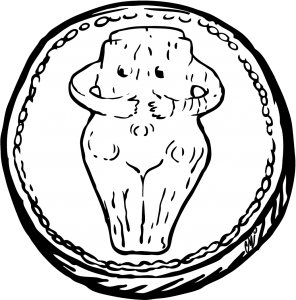The 1796 Charter of Alexandru Constantin Moruzi
Out of the rich and divers heritage of archives owned by the Bucharest Municipality Museum in its Collections of Documents, the Charter of the Hospital of the plague-striken in Dudești stands out. It was issued on July 1st 1796 by Alexandru Constantin Moruzi, ruler of Wallachia, with regards to the founding of the hospital.
This document is written on parchment in both Romanian – with Cyrillic letters and red ink – and in Greek – using black ink. The text is divided with a vertical oak-leaf collumn out of which rise out subtitles (summaries of the text) written with cinnabar. Made out of three pieces of parchment glued together, this special document is 2.55m long and 0.54m wide.
The frontispiece features the coat of arms of Wallachia – the cross bearing eagle facing right – and Moldavia – the bison head, – surrounded by the Sun and the Moon. All of it is framed in baroque style medalion, decorated with gold solution. On top of the medalion, the open crown appears as a symbol of ruling power. On each side, in pairs of two, the four Saint patrons of the hospital of Dudești appear – St. Bishop Alexandre (Aug. 30th), St. Bishop Visarion (Sept. 15th), St. Hallowed Marthyr Haralambie (Feb. 10th) and St. Dimitrie Basarabov (Oct. 27th). The frontispiece is a direct reflection of the text, symbolizing in the mentality of the time a chaser of the evil spirits of plague. As a result, divine power came together with lay power to found this new hospital establishment.
The ending of the Charter shows a votive picture of a completely different kind, that goes beyond miniature art and shows Western art influences. In the top case, the ruler’s signature is framed by two giant vultures. A golden baroque-style medal is attached to the ribbon they hold in their beaks and it depicts in its centre the eye of God, the Father, keeping watch on all things from above. In the bottom case, on the right side, the fouding-ruler, Alexandru Constantin Moruzi, is depicted in a profile portrait as he sits kneeled on a purple cushion, with his eyes and left hand turned towards the angel of death, flying above. Although the rulers was then only 30 years old, his beard and hair are painted grey and his entire looks convey wisdom and dignity, symbolizing the sage who is powerless in the face of death. The fortress of Bucharest appears in the background, representing one of the few depictions of the city in the 18th century. Next a tree is delicately painted as a symbol of life and triumph over death. The eye of God the Father, watching over the city, gives hope that Bucharest will not be denied divine grace.
Grina Mihaela Rafailă


